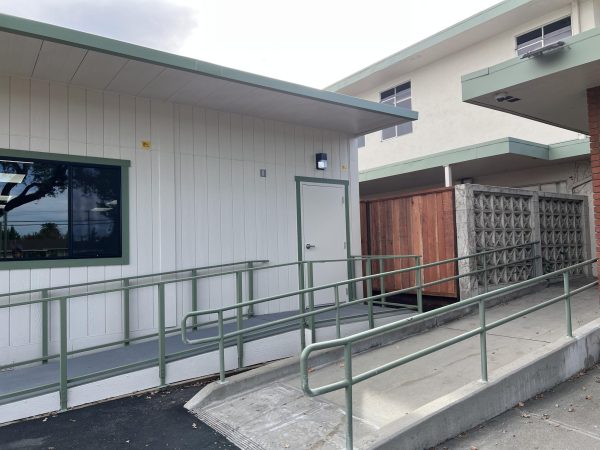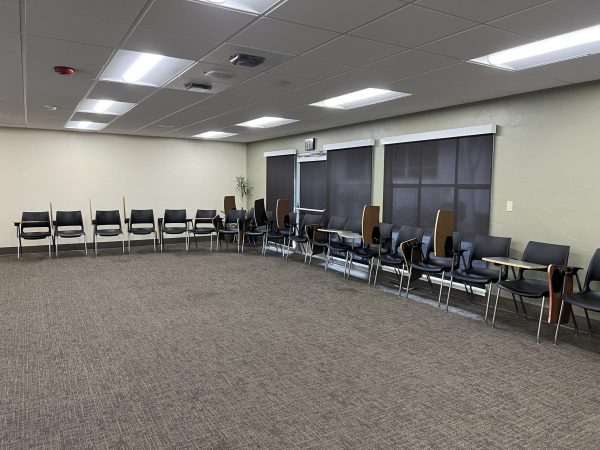As summer transitions into fall and students return from their idyllic and restful summer vacations, Archbishop Mitty similarly undergoes a series of renovations to prepare for the return of the school year. Whether it be minor refurbishments or major construction projects, Assistant Principal Mr. Fallis and Vice President of Advancement, Mr. Mathews believe that these changes showcase both present innovations and future endeavors. From the relocation of the Monarch Room to a portable classroom, to the foyer’s replacement and addition of new chairs, to an ambitious plan for the Four-Acre Field, these modifications provide additional opportunities for students, faculty, and staff to utilize better the resources offered on the school campus.
Adding new furniture to the foyer is a prime example of the mundane yet necessary refurbishments throughout the school. The previous chairs, situated in the foyer for the last 10-13 years, suffered from continuous wear and tear. It was time for an upgrade, and it led to Mr. Fallis to substitute these aging pieces of furniture for newer and cleaner replacements. Furthermore, the increase of seats in the foyer creates a new study area for students, reflecting the changing composition and demands of the student body for more indoor study areas.

Meanwhile, in terms of larger renovation projects, the recent move of the Monarch Room from the 600 wing to a portable in the junior lot reflects the growing need for additional classrooms, academic offerings, and administrative offices. The administration designated a space for an administrative conference room in the early 1990s, known as the Monarch Room. As the school’s size rapidly grew from originally 800 students, the Monarch Room slowly evolved from a faculty-only chamber into a multi-functional student and faculty gathering space, especially for hosting clubs and extracurricular activities. While the need for such a space has not changed, nor has the number of students on campus, other factors caused this relocation to occur.
Mr. Mathews points out that the establishment of a semester-long freshman Ethnic Studies course, an elective mandated in all California high schools, increased the number of classrooms needed during the school day. Furthermore, the second portable classroom in the junior lot may serve as a larger office for school publication and creative services staff members who currently work in the 600 wing, allowing for administrative restructuring and better use of office space and resources. Unexpectedly, as the previous Monarch Room has been converted into an ASL-only classroom known as 605, Mr. Mathews notes that “What’s cool for us, who have our offices here, is that there are several sections of ASL and it is quiet. When I walk by the doors, it is completely silent,” showcasing how these pivotal projects have both intended and unintended benefits for both faculty members and students alike.

According to Mr. Fallis, the four-acre field has been detrimentally impacted by inordinate levels of rainfall during Spring, causing “huge problems where the field had water runoff all over on the first base side for softball.”
Additionally, other than unpredictable weather patterns, the current infields in the four-acre field are made of large, uneven patches of dirt, rendering it difficult for multiple sports teams to practice simultaneously due to the differences in terrain.
From better field terrain or more predictable conditions, the turfing of the four-acre field was deemed essential for the success of Mitty’s renowned athletic program. While this process is long and difficult, Mr. Fallis hopes to complete this momentous project by next summer. To sum it up, the astroturfing of the four-acre field provides “better, more consistent access for us and more opportunities for athletes to use the field,” benefiting both the faculty and the student population.
Since 1964, Archbishop Mitty has constantly improved its campus to better fit and reflect the changing needs of the student body. As Mr. Fallis succinctly concludes, “We fix things as they come up, but we also try to plan ahead.”

